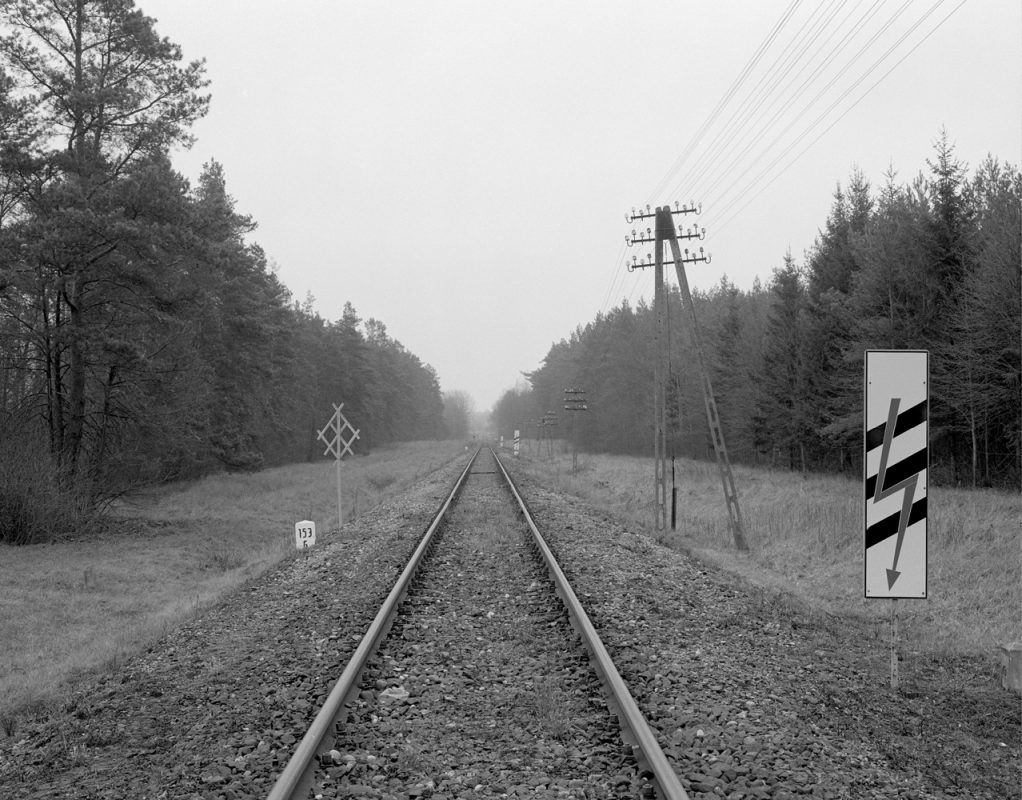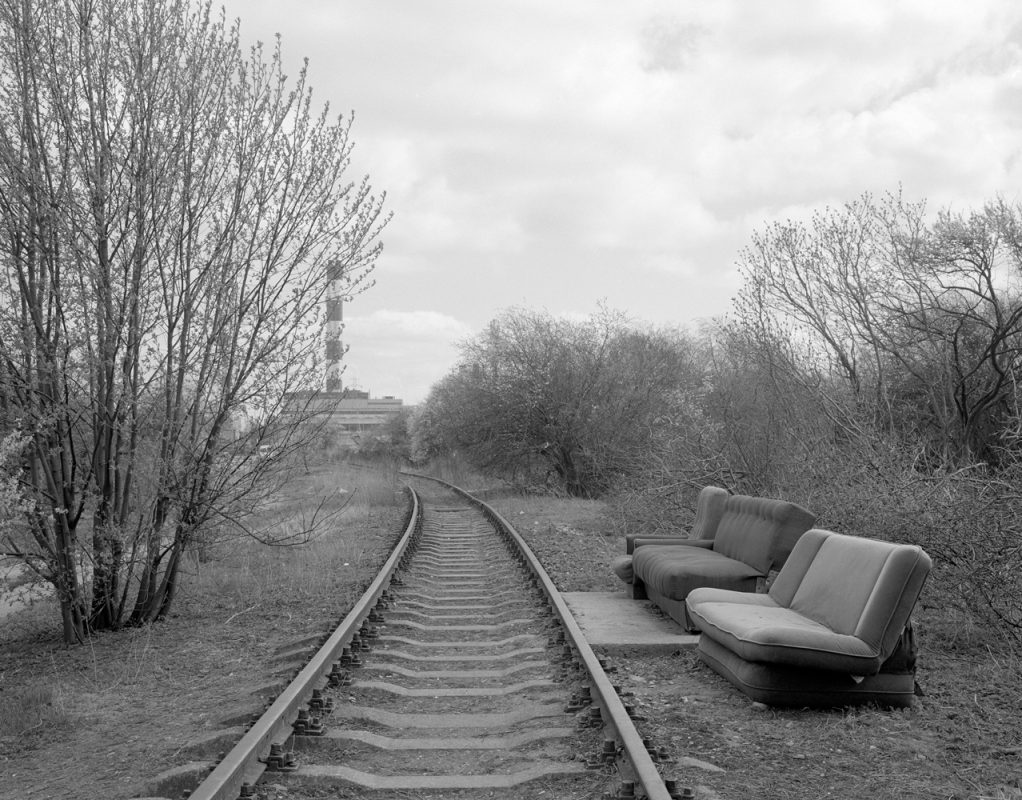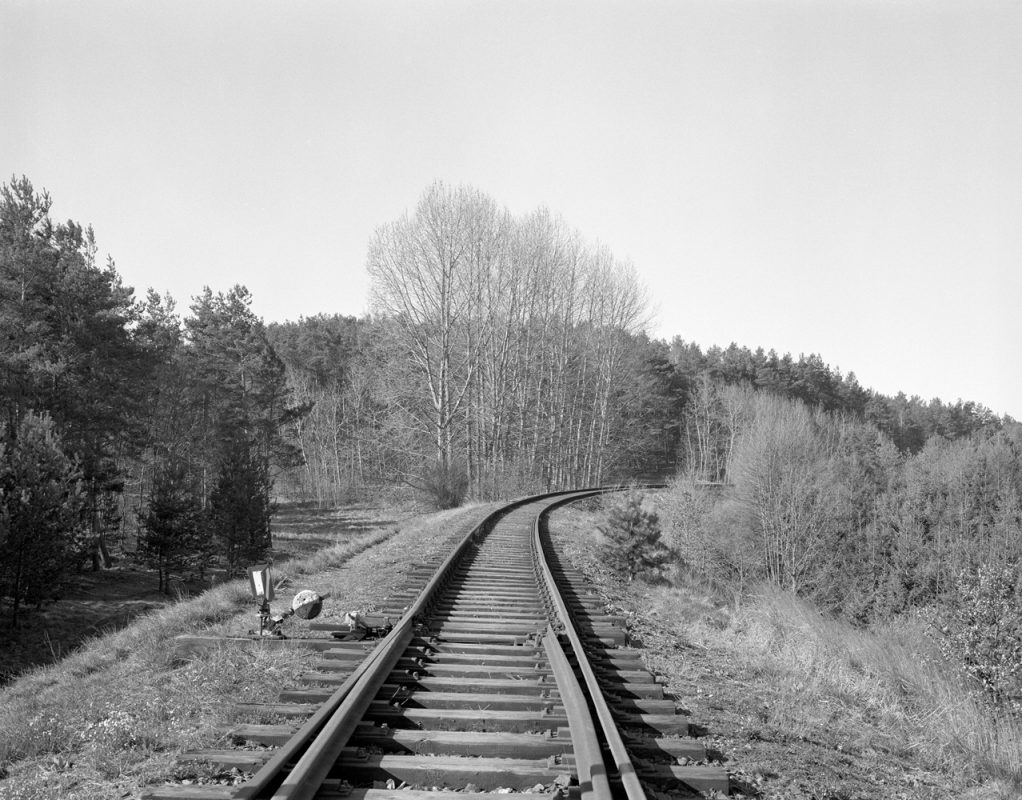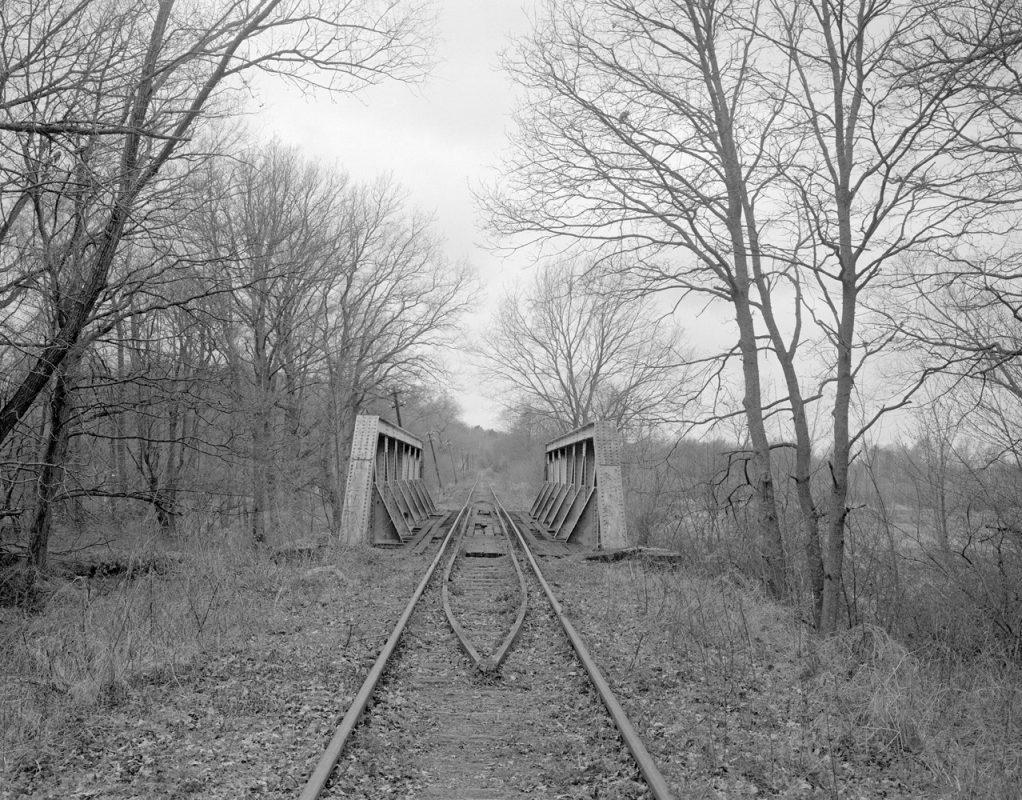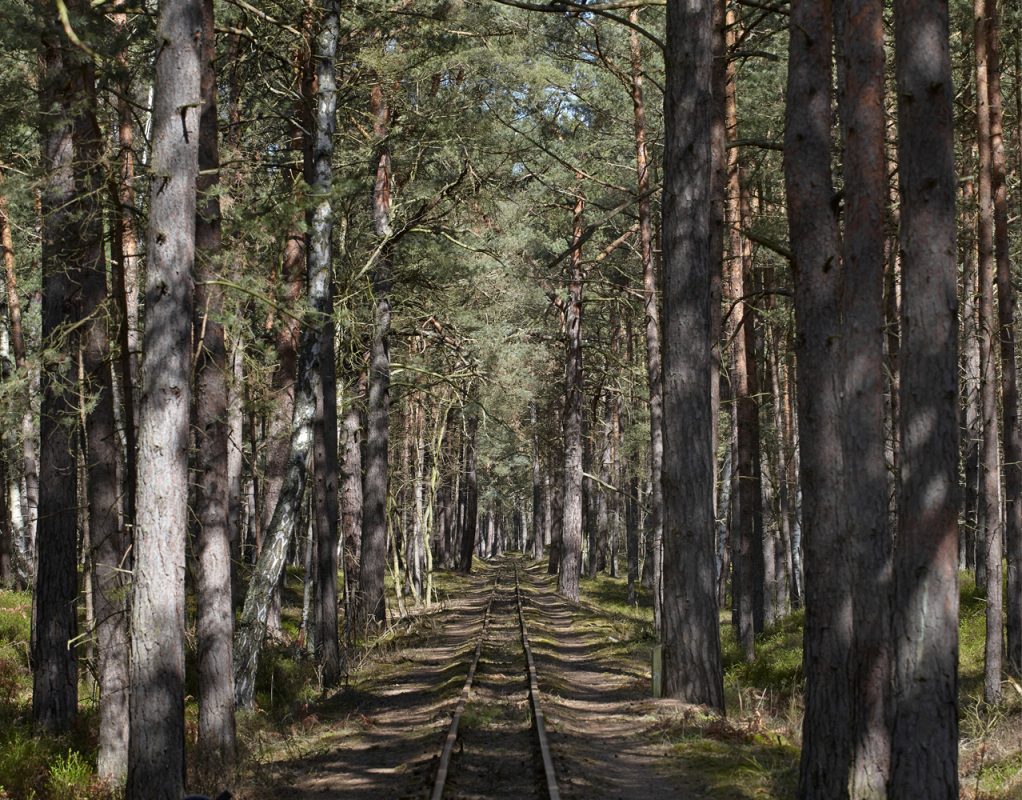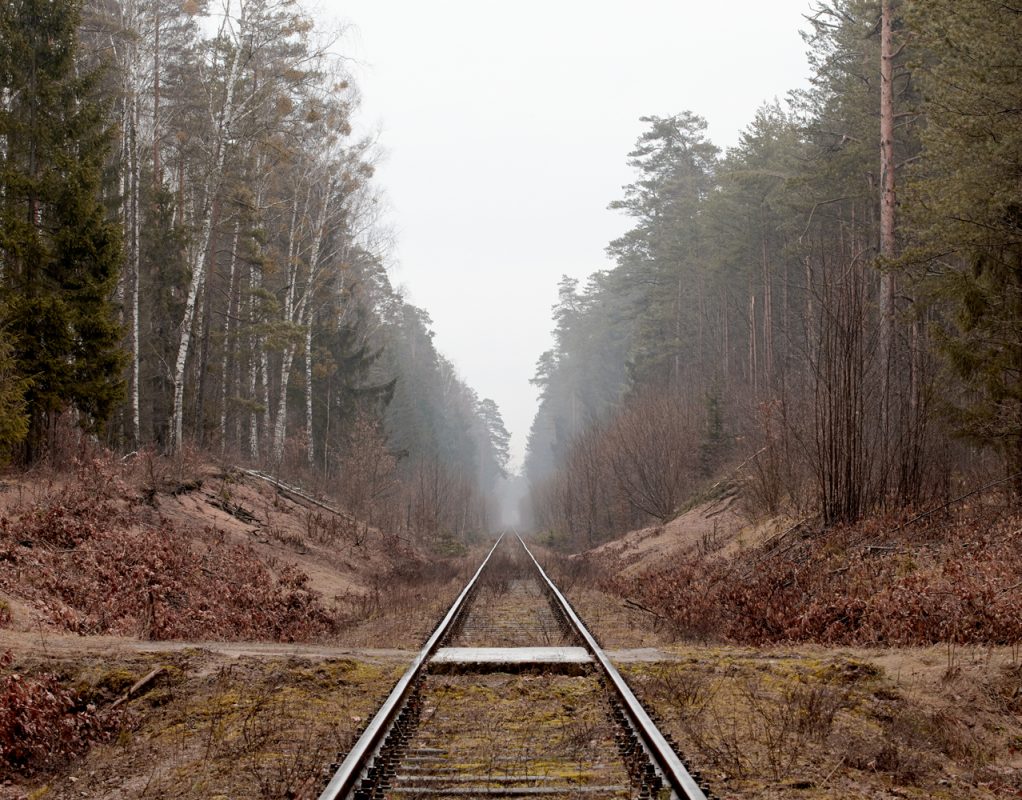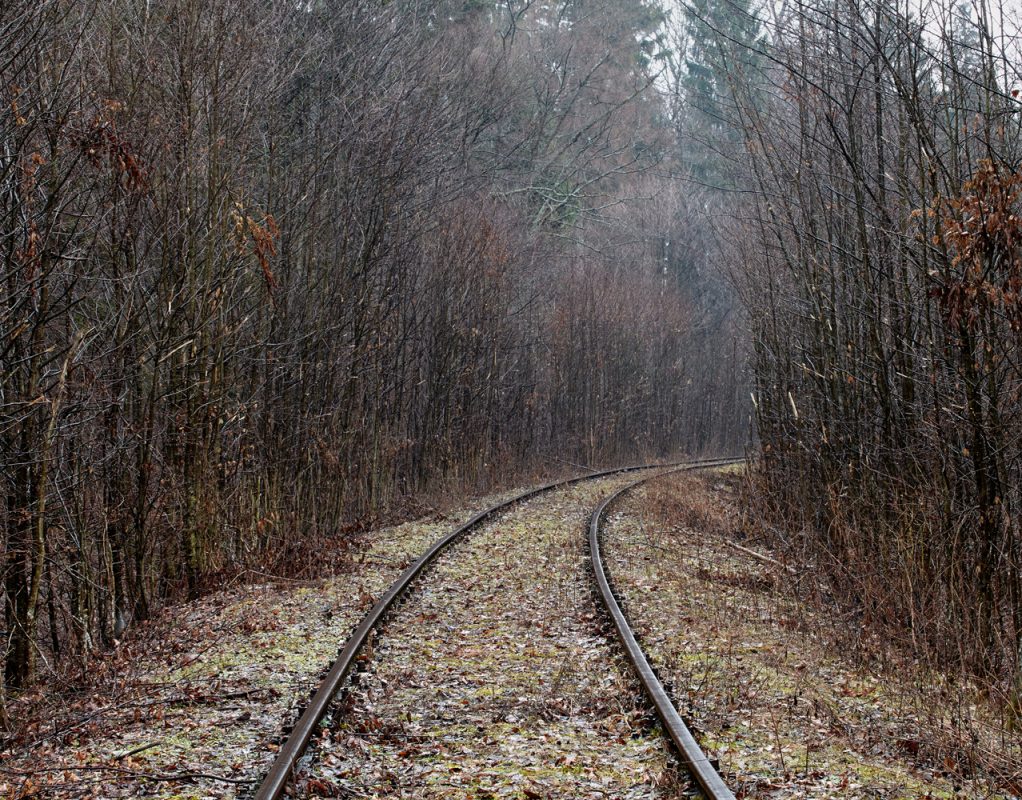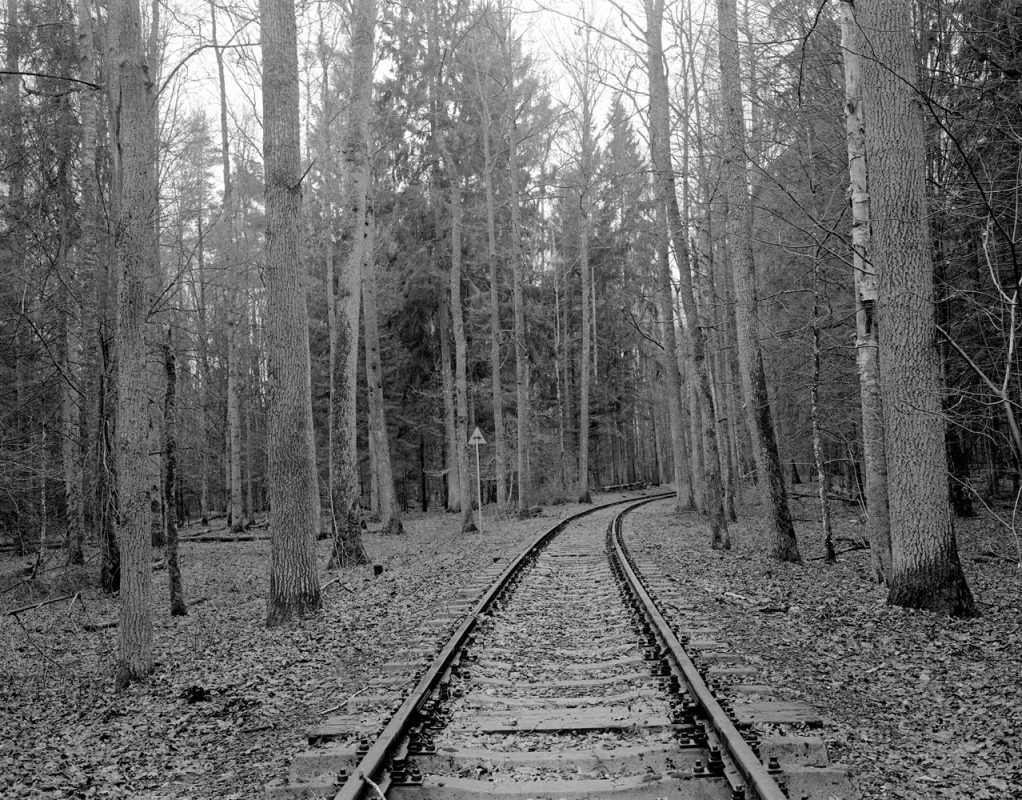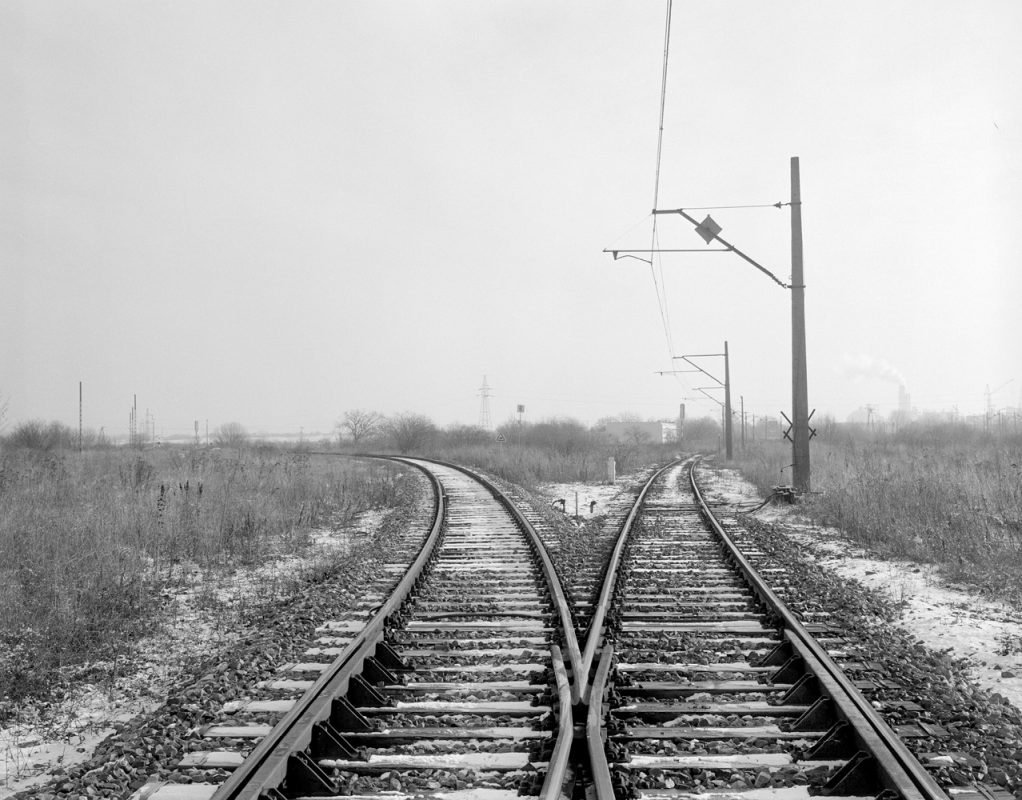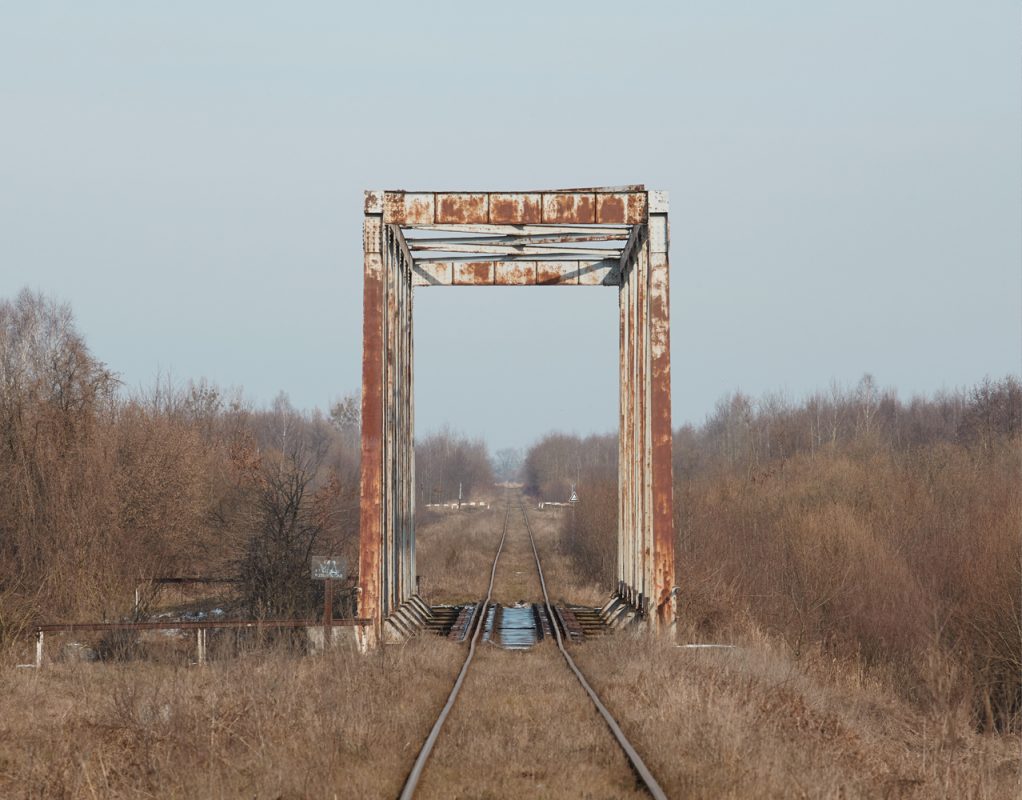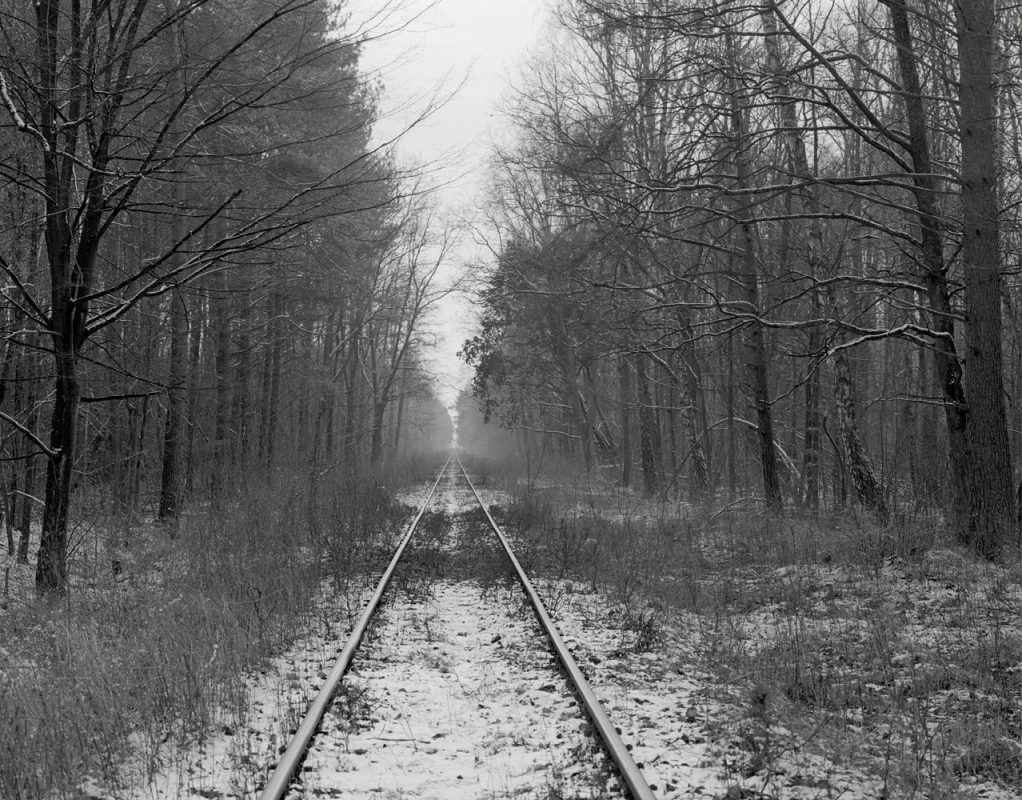Brian Griffin
Himmelstrasse
Book review by Gerry Badger
Brian Griffin making a conceptual photobook? What’s more, Himmelstrasse is an instant candidate for the year’s ‘top ten’ listings. It is a ‘conceptual’ book, I suppose, in that its overall conceit, or the idea behind it, might be considered to be more important than the photographs themselves. But in Griffin’s case, this is not to say that the images themselves are negligible – far from it. This, after all, is a photobook, so its meaning is carried by the pictures. Nevertheless, they are ‘simple’ photographs, without much sign of a stylistic signature or much rhetorical flourish by the photographer. Indeed, this is a one-picture book, a series of images in the Bechers’ mode, in each case looking down a railway track into the far distance from the same central viewpoint.
An important part of the book’s meaning is also embedded in its title, Himmelstrasse. This is a not uncommon street name in German-speaking countries – I know of a Himmelstrasse in Vienna for instance. It means ‘Heaven Street’, and “Gott in Himmel!” (God in Heaven!) was an expletive that occurred in the more jingoistic British war films – along of course, with “Achtung Spitfeuer!”
Put the railway tracks and Himmelstrasse together, and we come to the narrative and poetic core of the book. The tracks, shot by Griffin in Poland, represent the terrible realities of railway journeys during the Second World War, journeys that, in the Nazi occupied territories, frequently led to death: the ironic ‘heaven’ of the title. In particular, Brian Griffin is referring to the journeys so many innocent civilians made to the concentration camps in Poland and elsewhere – civilians selected to be transported to a far off camp to be worked to death, or sent straight to the gas chambers, just because they were Jewish, or Polish, or Romany, or gay.
Now the death trains, mercifully, have long ceased to run, but the tracks remain, some of them disused and overgrown, others put to use for different, more benign purposes. As remnants of a dark history, they exude a palpable sense of loss and poignancy, and yet Griffin’s imagery is also rooted in the present, thanks to recent events.
If the book memorialises, perhaps it also warns. Perhaps, as we look at a photograph of some disused track, Griffin is saying that it would not take much for it to be refurbished and pressed into service to take people to Himmelstrasse once again. Indeed, Griffin’s book seems incredibly timely, as we are currently seeing scenes on our television screens of a mass exodus across Europe, the likes of which has not been seen since the end of the war. An exodus accompanied by warnings from certain quarters that it could lead to future social, ethnic, and religious strife, with a recurrence of the kind of intolerance that led to the previous attempt to impose a ‘final solution’ upon Europe. Simple photographs then, but with a complex meaning, and possibly getting more complex by the minute.
In terms of the photographs, Brian Griffin is too much of an old-time photographer to completely narrow this project down. One can imagine how the Bechers would treat this subject. It really would be a one-picture book. But Griffin allows a certain variety within the tight framework, although he is rigorous enough. Some of the images are black-and-white, but others are colour. Some of the tracks are clearly out of use, while others are still in operation.
There are two near constants, and both are important. Firstly, this is a rural landscape book. There is an image where the tracks run through an industrial complex, an oil refinery maybe, and a couple of abandoned platforms, but no sign of cities, stations, or even villages. Of course, much of the transportation to the camps passed through major conurbations at night, for even the Nazis did not want their people to know what was really happening.
If the settings are rural, they mostly feature woods and forests, the great forest that once covered Germany and this part of Europe, and for instance, defeated the mighty Romans. And the most notorious camp of all, Auschwitz-Birkenau, was situated in the middle of a forest. Birkenau means ‘the place of the birches.’ The most enduring image of the Holocaust is probably the single railway track ending at the gatehouse to Aushwitz, a picture that is surely the conceptual template for Himmelstrasse.
And finally, there is the most important constant of all. There is no sign of summer in the book. This is a bleak, cold, midwinter book, as befits its sombre subject. It was the winter, ironically, that ultimately beat the Nazis, although it was also the winter that killed so many in the camps. At the very end, the railway stops, and we are faced with a narrow, track-free path through the woods in the penultimate image. The final picture is the only one where we cannot see the way ahead. A large concrete block literally bars our progress. It may have had railway buffers attached to it; it may have had some other purpose. Whatever it is, it exudes an ominous feeling of finality – it tells us discretely but firmly that this definitely is the end. ♦
All images courtesy of the artist and Browns Editions. © Brian Griffin
—
Gerry Badger is a photographer, architect and photography critic of more than 30 years. His published books include Collecting Photography (2003) and monographs on John Gossage and Stephen Shore, as well as Phaidon’s 55s on Chris Killip (2001) and Eugene Atget (2001). In 2007 he published The Genius of Photography, the book of the BBC television series of the same name, and in 2010 The Pleasures of Good Photographs, an anthology of essays that was awarded the 2011 Infinity Writers’ Award from the International Center of Photography, New York. He also co-authored The Photobook: A History, Vol I, II and III with Martin Parr.

